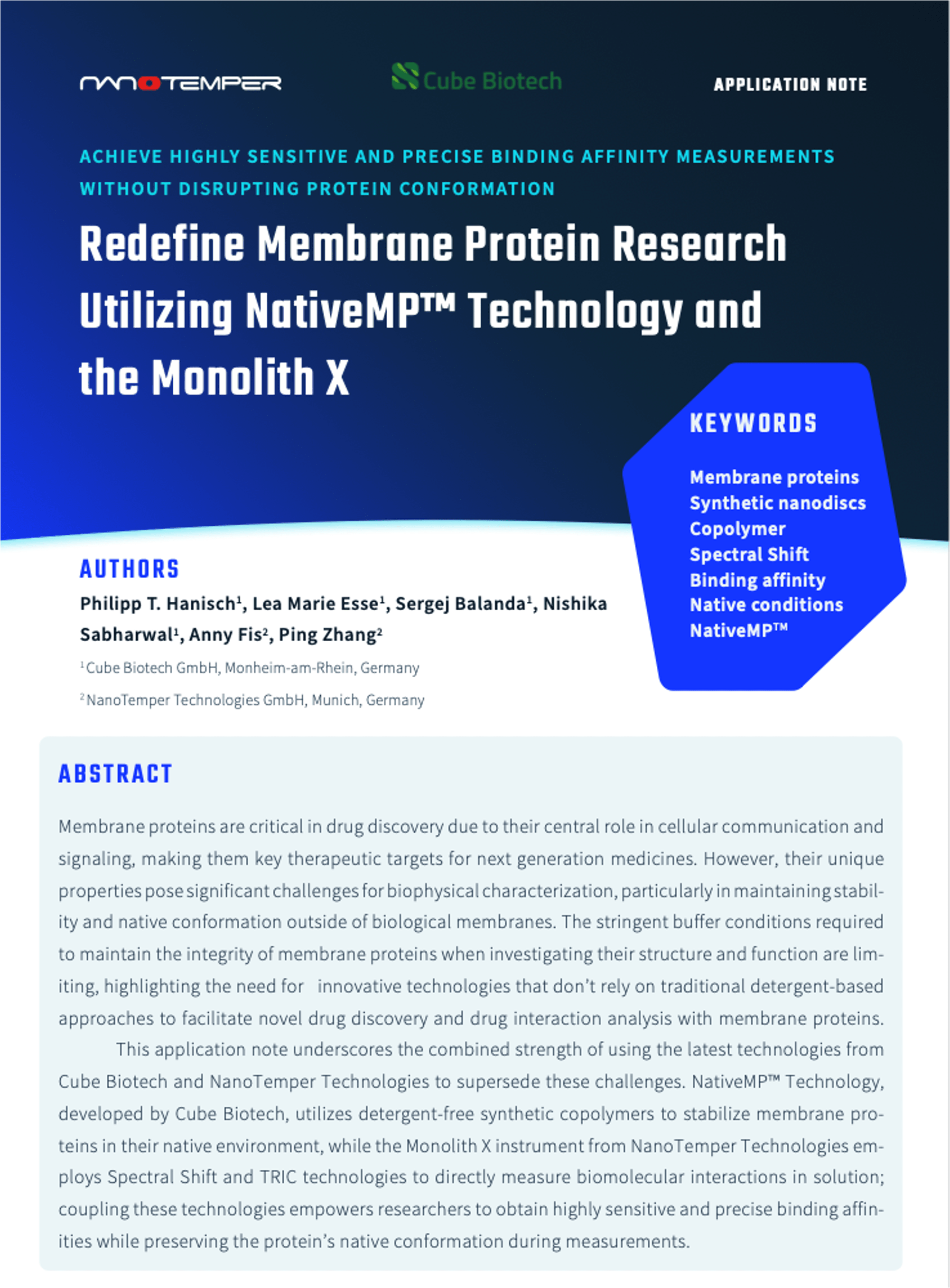Kotov, V., Bartels, K., Josts, I., et al.
Scientific Reports 2019, vol: 9 doi: 10.1038/s41598-019-46686-8
Abstract
Protein stability in detergent or membrane-like environments is the bottleneck for structural studies on integral membrane proteins (IMP). Irrespective of the method to study the structure of an IMP, detergent solubilization from the membrane is usually the first step in the workflow. Here, we establish a simple, high-throughput screening method to identify optimal detergent conditions for membrane protein stabilization. We apply differential scanning fluorimetry in combination with scattering upon thermal denaturation to study the unfolding of integral membrane proteins. Nine different prokaryotic and eukaryotic membrane proteins were used as test cases to benchmark our detergent screening method. Our results show that it is possible to measure the stability and solubility of IMPs by diluting them from their initial solubilization condition into different detergents. We were able to identify groups of detergents with characteristic stabilization and destabilization effects for selected targets. We further show that fos-choline and PEG family detergents may lead to membrane protein destabilization and unfolding. Finally, we determined thenmodynamic parameters that are important indicators of IMP stability. The described protocol allows the identification of conditions that are suitable for downstream handling of membrane proteins during purification.
Topics: Prometheus, nanoDSF, Membrane Proteins, Publications










